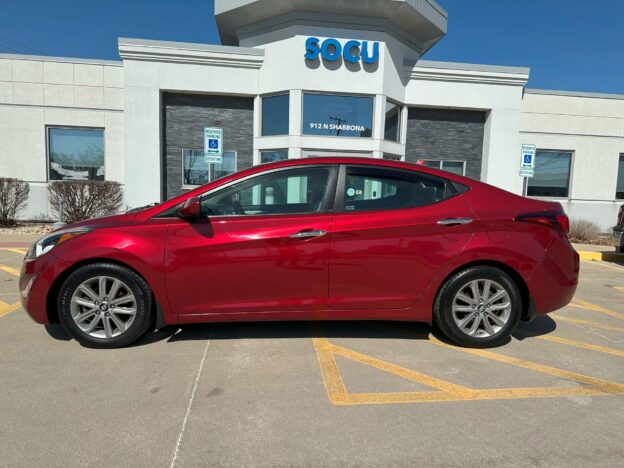Buying a car doesn’t have to be expensive or complicated. One smart way to save money is by buying a repossessed vehicle directly from a bank or credit union. Yes! You heard that right. Banks and credit unions sell and finance repossessed vehicles directly to the public. Often times right out of the bank parking lot. Even better, some banks will offer special financing options just to move their inventory faster.
In this guide, I’ll coach you through everything step by step. You’ll learn how to:
-
Find repossessed cars through local banks using websites like RepoFinder.com.
-
Inspect and research the vehicle so you know what you’re getting.
-
Ask the bank about special financing options for a repossessed vehicle.
Let’s get started!
What Is a Repossessed Vehicle?
A repossessed vehicle, or “repo,” is a car that was taken back by a lender. This usually happens when the person who bought it couldn’t make their loan payments. The bank or credit union then sells the vehicle to recover their money.
Repos are usually:
-
Sold “as-is,” meaning no repairs or upgrades before you buy.
-
Priced lower than dealership cars.
-
Available directly from banks or credit unions.

Why Buy and Finance a Repossessed Vehicle?
Great question. Here are some solid reasons to consider a repo:
✅ Lower Prices
Repos are often cheaper than similar cars at dealerships. Banks just want to get their money back fast.
✅ Less Competition
Not as many people know they can buy repos directly from banks. That means more options for you.
✅ Financing Flexibility
Some banks offer special financing for repossessed vehicles. They’d rather work with you than let the car sit in a lot.
Step 1: Find Repossessed Vehicles Through Banks
Okay, let’s talk about how to actually find these hidden deals.
🔍 Use RepoFinder.com to Visit Local Bank and Credit Union Websites
The easiest place to start is RepoFinder.com. It lists repos from banks and credit unions all over the country.
Here’s how it works:
-
Go to the website.
-
Choose your state or click “National Listings.”
-
Browse repos by vehicle type: cars, trucks, RVs, boats, and more.
-
Click on a repo to view details and seller contact info.
Best part? There are no fees, no middlemen, and no commissions when you buy from the bank.
Step 2: Inspect and Research the Vehicle
Now that you’ve found a car, it’s time to make sure it’s a good one.
🛠️ Step 1: Get a Vehicle History Report
Before anything else, check the car’s history. Use websites like:
Look out for:
-
Accidents
-
Flood damage
-
Odometer rollbacks
-
Title issues
A clean title is best! Ask the bank if they already have a vehicle history report. Many of them will.
👀 Step 2: Do a Visual Inspection
If the car is nearby, visit the lot and take a look.
Things to check:
| What to Check | What to Look For |
|---|---|
| Tires | Even wear, no bald spots |
| Body | Rust, dents, and paint damage |
| Windows/Lights | Cracks, chips, working condition |
| Interior | Clean seats, working electronics |
| Engine Compartment | Leaks, smells, loose parts |
Pro tip: Take pictures or a video to review later.
🔧 Step 3: Ask for a Pre-Purchase Inspection
If the bank allows it, bring a mechanic to inspect the car. Or ask if you can take it to a shop.
A mechanic can spot:
-
Transmission problems
-
Brake issues
-
Leaks
-
Engine wear
This step could save you thousands down the road.
🧠 Step 4: Compare Prices Online
Use websites like:
-
KBB.com (Kelley Blue Book)
Compare the repo’s price to similar models. Make sure you’re getting a fair deal.
Step 3: Ask the Bank About Special Financing
Okay, so you’ve found a good repo and done your research. Now comes the best part: financing a repossessed vehicle—directly from the bank.
💰 Why Banks Offer Better Deals
Banks and credit unions want to move repossessed cars quickly. The longer a repo sits, the more it costs them.
To speed things up, they may:
-
Offer lower interest rates
-
Provide in-house financing options
-
Skip credit checks or be flexible with your score
-
Accept smaller down payments
That’s why buying from a bank can be a win-win.
📞 Questions to Ask the Bank
Before signing anything, ask the bank these key questions:
| Question | Why It Matters |
|---|---|
| Do you offer financing for repossessed vehicles? | You want to work directly with the lender. |
| Is the interest rate lower than typical auto loans? | Lower rates = lower payments. |
| Are there any special terms for buying repos? | Some deals are short-term, interest-free, or skip payments for 60 days. |
| Can I apply even if my credit isn’t perfect? | Many banks are more flexible with repo buyers. |
| What documents do I need? | Be ready with ID, proof of income, and insurance info. |
Don’t be afraid to ask questions. Banks are often happy to explain everything.
📝 Be Prepared to Apply
If the bank offers financing for a repossessed vehicle, you’ll usually need:
-
Valid ID
-
Proof of income (like pay stubs)
-
Proof of insurance
-
Down payment (sometimes)
Tip: Some banks may ask you to become a member first, especially credit unions. It’s usually easy and free. After that you’re able to buy and finance repossessed vehicles without any problem.
Real-Life Example: Buying and Financing a Repo from a Credit Union
Let’s say you find a 2020 Ford Escape listed by a credit union on RepoFinder.com.
Here’s how the process might go:
-
You call the credit union and ask if it’s still available.
-
They confirm and give you details.
-
You check the car’s history online.
-
You ask a mechanic to look at it.
-
You apply for financing a repossessed vehicle through the credit union.
-
You’re approved at 4.5% interest (lower than your bank’s 7.5% offer).
-
You sign paperwork and drive off with a great deal!
Total savings? Could be thousands over the life of the loan.
Final Tips Before You Buying of Financing a Repo
Let’s wrap things up with a few extra pointers.
✅ DO:
-
Use RepoFinder.com to make searching banks selling repos easier.
-
Research the vehicle’s value and history.
-
Ask the bank about special financing for repos.
-
Compare loan offers before you decide.
❌ DON’T:
-
Assume all repos are in bad shape—some are nearly new.
-
Skip the inspection, even if the price looks good.
-
Be afraid to negotiate—some banks are open to offers.
-
Forget to check loan terms like interest rate and length.
Conclusion: Make a Smart Move
Buying and financing a repossessed vehicle through a bank or credit union can be a smart move. You’ll often find lower prices, more flexible financing, and less competition compared to regular dealerships.
Just remember:
-
Start your search at RepoFinder.com.
-
Inspect and research each vehicle.
-
Ask the bank how they can help with financing.
You’ve got this. And I’m cheering you on every step of the way.




